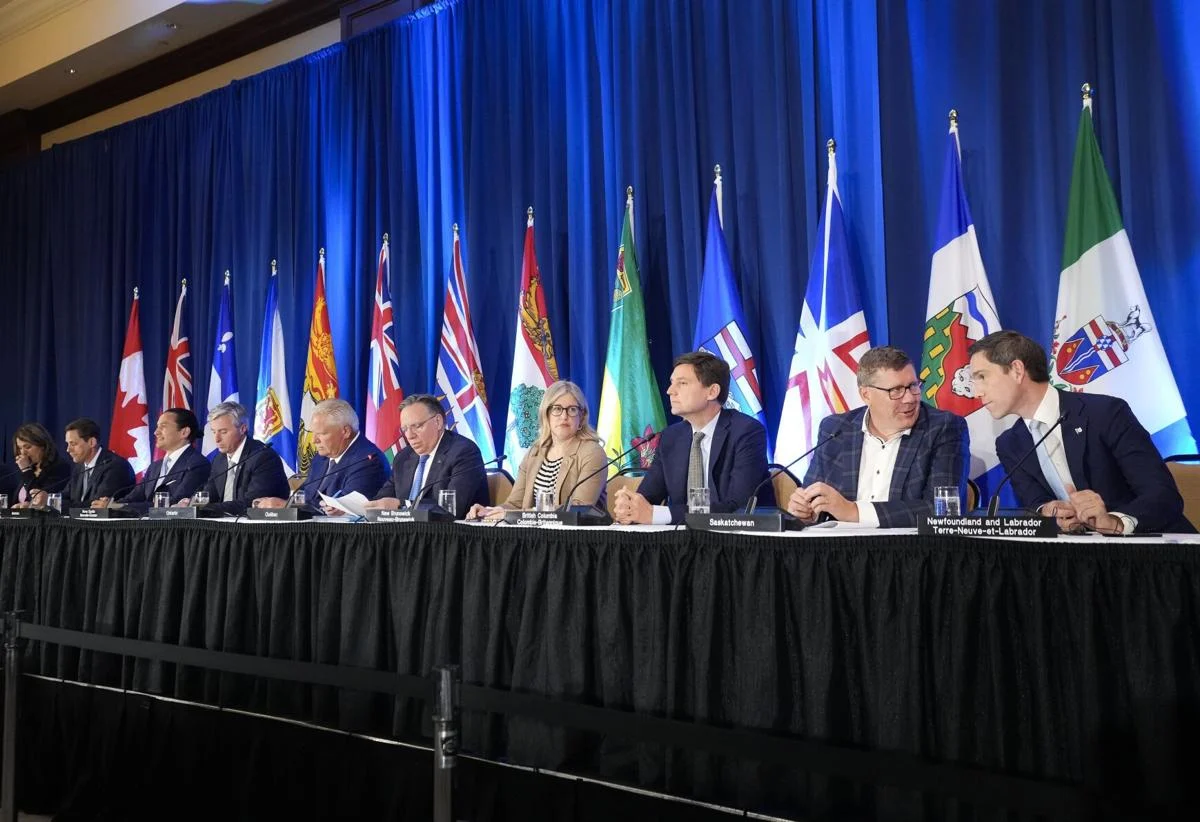
Provinces Demand More Say in Immigration: Doug Ford Takes Lead with Ontario Work Permit Plan
Amid rising public concern over immigration and its impact on housing and public services, Canada’s provincial and territorial leaders are pressing the federal government to allow more localized control of immigration. Ontario Premier Doug Ford has taken a bold step, declaring his intention to issue provincial work permits—a move that could mark a significant shift in how Canada manages immigration.
Premiers Push for Regional Immigration Powers
At the recent Council of the Federation meeting, Canada’s 13 premiers united in their call for greater authority over immigration. They argued that provincial governments are in a better position to assess workforce needs and tailor policies accordingly. Using Section 95 of the Constitution, which permits provinces to legislate on immigration if consistent with federal laws, leaders say they can better serve their communities.
This demand follows significant federal cutbacks to immigration levels and Provincial Nominee Program (PNP) allocations. Premiers believe these cuts have deepened labour shortages in critical sectors, especially healthcare, services, and manufacturing.
Doug Ford Announces Ontario-Driven Work Permits
Premier Doug Ford announced that Ontario is preparing to implement its own work permit system, starting with asylum seekers and migrants. With federal permit wait times stretching over two years, Ford argued that many individuals are being left in limbo, unable to work and contribute to society.
“We have healthy, capable people stuck in hotels for over two years,” said Ford. “We can’t wait anymore. We will issue permits ourselves to let them work and support our economy.”
While the plan’s exact structure is still in development, Ford’s office confirmed that legal and operational groundwork is underway.
Why Provinces Are Seeking Control
Provinces face unique labour shortages and economic pressures. Leaders in Manitoba, Nova Scotia, and New Brunswick highlighted the critical role of the PNP in attracting skilled workers to their regions. The federal government’s 50% reduction in PNP spots has jeopardized staffing in rural industries, healthcare, and services.
For example:
- Manitoba relies on newcomers for rural and manufacturing jobs.
- Nova Scotia faces stagnation due to work permit delays.
- Quebec has criticized long asylum application wait times, sometimes reaching three years.
Premiers argue that faster, regionally managed immigration processes will better match newcomers to local opportunities, reduce public service strain, and improve economic integration.
Public Concern Adds Pressure
Recent surveys show a decline in public support for immigration, largely due to stress on housing, healthcare, and infrastructure. This sentiment has pushed the federal government to reduce international student intakes and tighten temporary resident policies.
However, premiers say these blanket federal decisions overlook regional labour shortages. In Ontario, tens of thousands of asylum seekers are unable to work due to delays. Ford contends that enabling them to work will boost local economies through tax contributions and consumer activity.
Federal Government Responds, But Tensions Grow
Immigration Minister Lena Diab has faced criticism from Ontario and other premiers for not acting fast enough. While Diab’s office cites a $3.2 billion investment in newcomer settlement services, provincial leaders argue that funding has not kept pace with actual needs.
Ford emphasized that more than funding is needed. “The federal government must allow provinces to lead immigration planning,” he said, urging clearer support from Prime Minister Mark Carney.
Economic Benefits of Provincial Immigration Oversight
Localizing immigration policy could offer targeted solutions to labour shortages:
- Custom work permits can be fast-tracked based on regional needs.
- Economic sectors in need of workers—like long-term care, food processing, and transport—can be prioritized.
- Newcomers can integrate more quickly, reducing dependency on public assistance.
Global trends already show success in regionalized immigration models, particularly in countries like Australia and Germany.
Barriers and Legal Questions Remain
While Section 95 gives provinces legislative rights, the mechanics of implementation are unclear. Any new permit systems must align with existing federal frameworks, and legal challenges could arise if overlap or conflict occurs.
Moreover, public attitudes toward immigration may complicate provincial efforts. Leaders must ensure transparency and maintain public trust while implementing reforms.
Asylum Seekers at the Heart of the Plan
Ontario’s focus on asylum seekers is particularly significant. Many have skills and are eager to work, but face long wait times due to backlogged federal processes.
Allowing them to work immediately through provincial permits could provide faster housing stability, income, and tax revenue, reducing reliance on shelters and public funds.
Ford stated, “They want to contribute, just like any Canadian. Let’s give them the chance.”
A Turning Point in Canada’s Immigration Strategy
Ontario’s move may set a precedent for other provinces. If successful, it could shift Canada’s immigration system toward a decentralized model—where provinces play a lead role in selecting and integrating newcomers.
With labour shortages growing and national sentiment shifting, this regional strategy may offer the flexibility and speed Canada needs in its immigration approach.
For a consultation about Immigration options, reach out to the CAD IMMIGRATION today!





